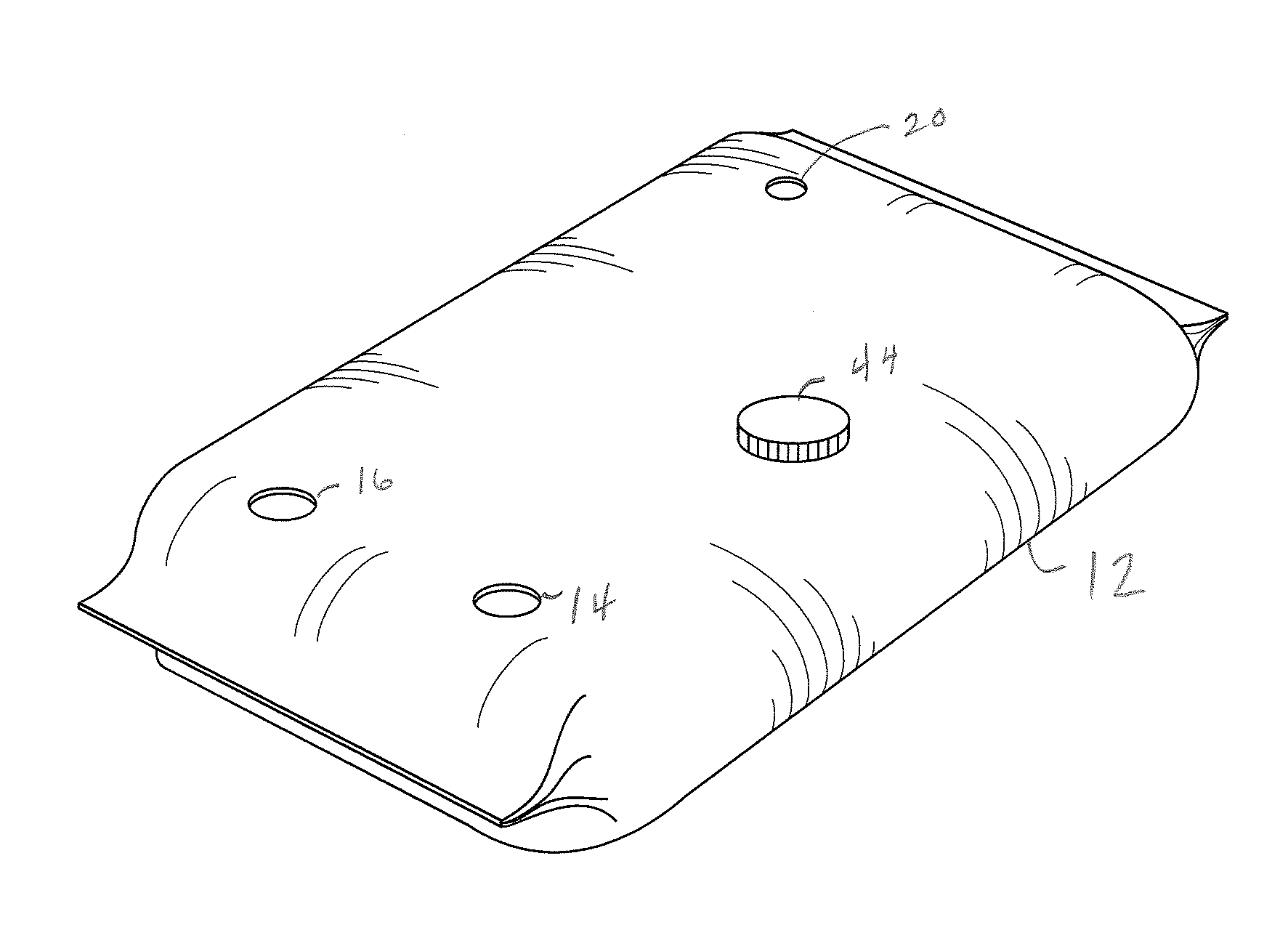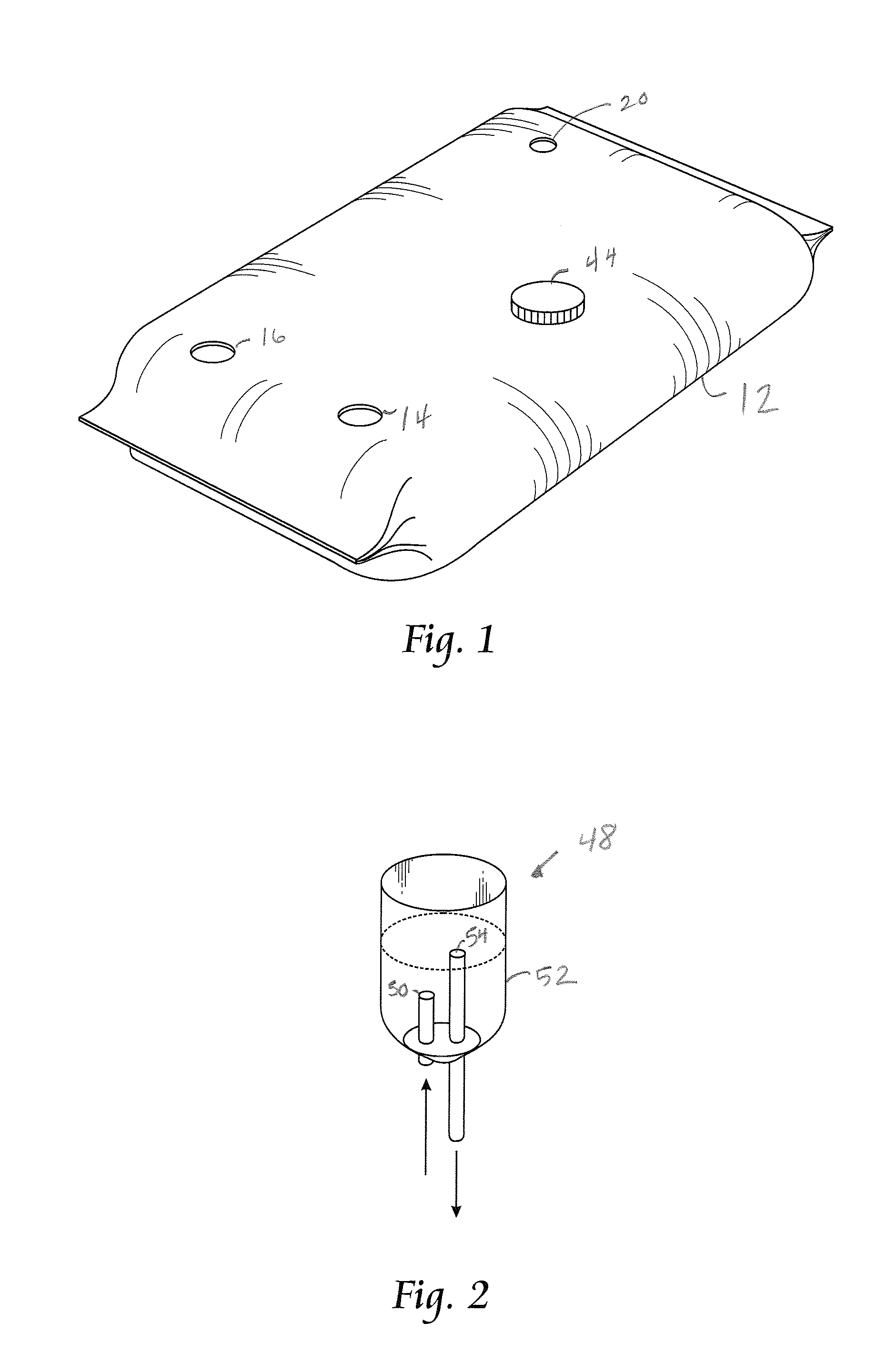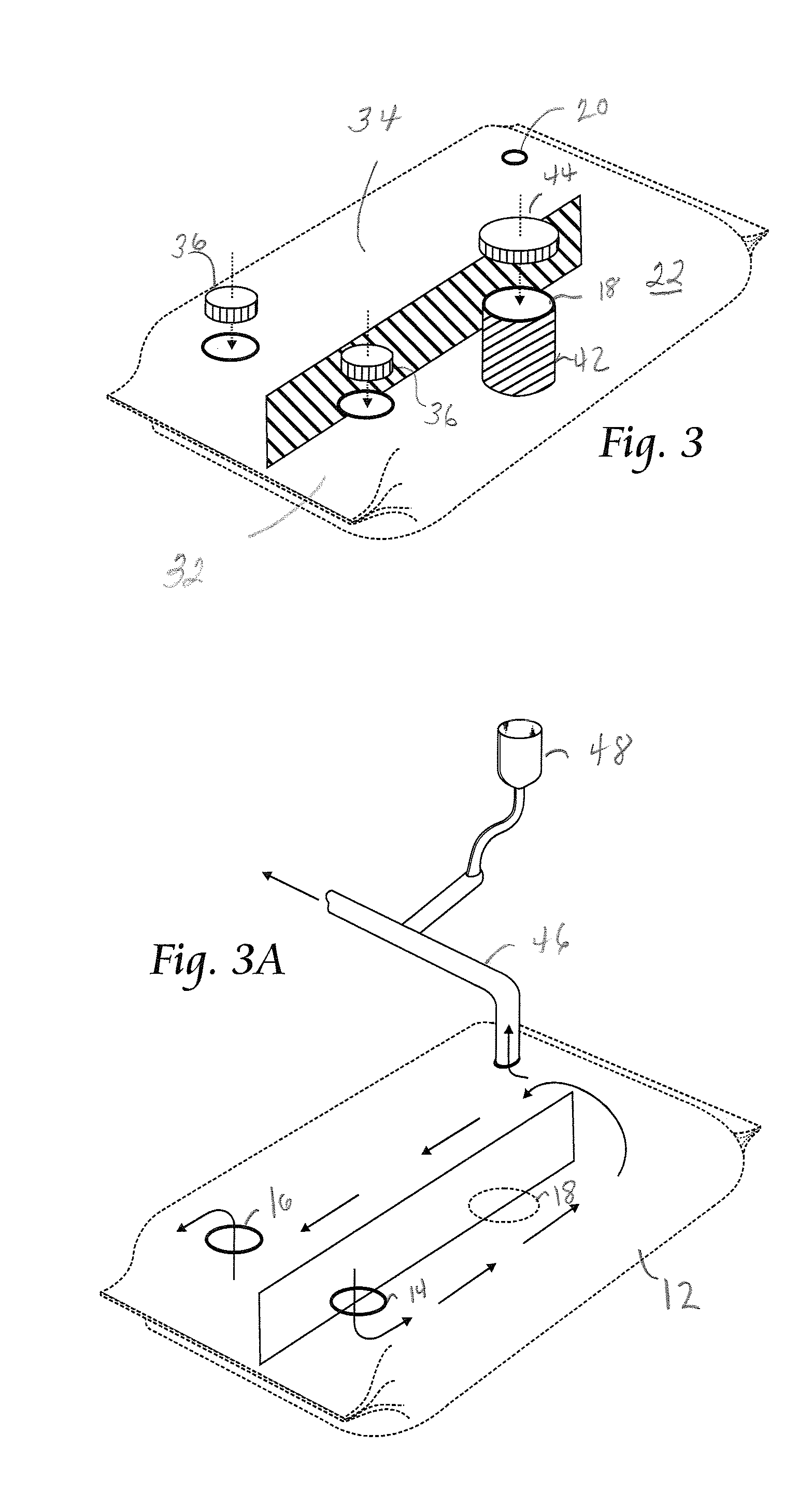Anaerobic digester system for animal waste stabilization and biogas recovery
a biogas recovery and anaerobic digestion technology, applied in the field of pollution control, can solve the problems of affecting human health, affecting human health, degrading water quality, and affecting human health,
- Summary
- Abstract
- Description
- Claims
- Application Information
AI Technical Summary
Benefits of technology
Problems solved by technology
Method used
Image
Examples
Embodiment Construction
[0037]As shown in the drawings for purposes of illustration, the present invention is concerned with an improved anaerobic digester system for anaerobic digestion of animal waste with biogas production and recovery, the system generally designated in the accompanying drawings by the reference number 10. The anaerobic digester system comprises, generally, a substantially flexible bladder 12 and 120 constructed of a reinforced geo-membrane material for anaerobically digesting waste with biogas production having one or more waste inlets 14, digester effluent outlets 16, sludge access ports 18, and biogas outlets 20 in a top surface 22 thereof and sized to have a design operating volume based on latitude to maintain the greater of a selected maximum daily volatile solids (VS) loading rate per 1,000 ft3, or the minimum hydraulic retention time (HRT) adequate for methane production. The anaerobic digester system 10 may further comprise one or more biogas storage containers 24 and 240 for ...
PUM
| Property | Measurement | Unit |
|---|---|---|
| volume | aaaaa | aaaaa |
| thickness | aaaaa | aaaaa |
| temperatures | aaaaa | aaaaa |
Abstract
Description
Claims
Application Information
 Login to View More
Login to View More - R&D
- Intellectual Property
- Life Sciences
- Materials
- Tech Scout
- Unparalleled Data Quality
- Higher Quality Content
- 60% Fewer Hallucinations
Browse by: Latest US Patents, China's latest patents, Technical Efficacy Thesaurus, Application Domain, Technology Topic, Popular Technical Reports.
© 2025 PatSnap. All rights reserved.Legal|Privacy policy|Modern Slavery Act Transparency Statement|Sitemap|About US| Contact US: help@patsnap.com



